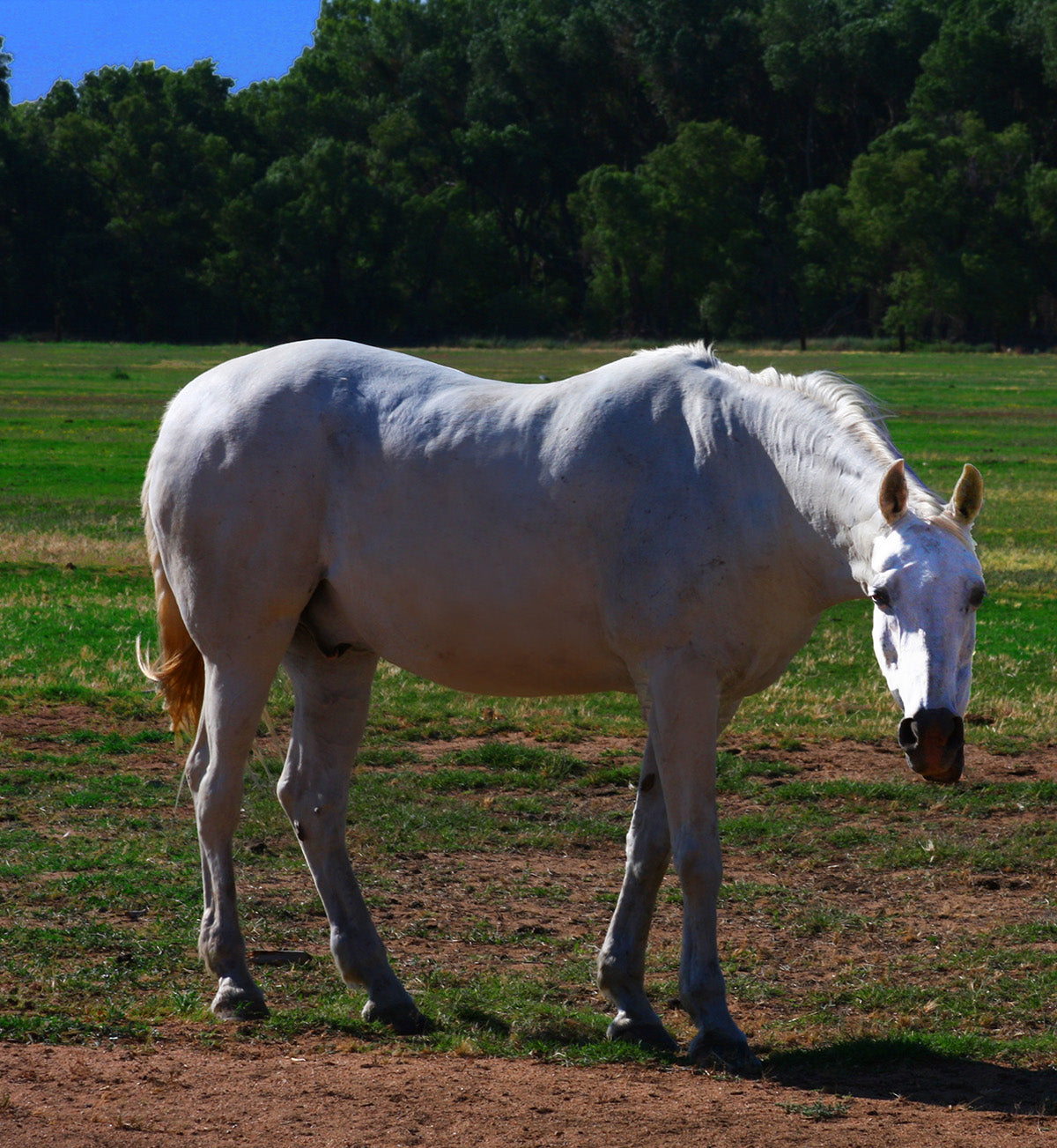
Obesity is the biggest risk factor for insulin resistance in horses. Photo credit: Rennett Stowe from USA, CC BY 2.0 via Wikimedia Commons
By: Laurel Scott
Studies show there is a clear connection in horses between insulin resistance (also called "insulin dysregulation") and the potentially devastating inflammatory hoof condition known as laminitis ("founder"). While the causes of insulin resistance are not fully understood, several key risk factors have been identified.
If you value your horse's health, it pays to know the basics about insulin resistance and to be aware of these risk factors.
Everyday sugars
It all starts with the starches and sugars (glucose) that your horse consumes in his everyday rations. The pancreas produces insulin, which regulates the concentration of glucose in the blood and transfers it to cells throughout the body, where it is converted into energy.
The more sugar and starch consumed, the more insulin is produced. (And yes, grain generally contains more glucose building blocks than most forages.)
When resistance develops, the cells stop responding to insulin. What happens is like the slamming of the cell doors, resulting in a buildup of insulin and glucose in the blood. This can open another door - to laminitis, a painful and sometimes deadly inflammatory condition of the foot.
What about EMS?
So where does Equine Metabolic Syndrome (EMS) fit into this picture? A hormonal disorder (or collection of disorders) in horses, EMS is characterized by insulin resistance/dysregulation, obesity and an increased risk of laminitis.
Researchers now consider EMS common in thriftier horses, those whose systems are so ultra-efficient that they absorb more glucose from their meals than other horses and end up with increased insulin levels as a result. This susceptibility could well be inherited (think certain compactly built breeds like Morgans or Arabians, hardy ponies and easy keepers in general).
That said, obesity is the biggest risk factor for insulin resistance, regardless of a horse's breed or genetic makeup. Age is also a significant factor; older horses can experience a decline in insulin sensitivity that renders them more prone to this condition.
Fortunately, there is a new emphasis these days on identifying vulnerable individuals before their conditions result in laminitis.
The Bottom Line
An ounce of prevention being worth a pound of cure, it makes sense to keep any horse from getting fat to prevent related health problems, including laminitis.
Dietary restrictions might include the reduction of sugar intake and dividing your horse's ration into frequent, small meals. Limiting grazing during certain times of the year (spring or fall) or day (late afternoon) is another good idea, because lush grass is rich in the types of sugars than can overload your horse's system.
And don't forget about exercise! More than just turnout, a sound horse will always benefit from a calorie-burning session in the ring, out in the field or on the trail. In addition, exercise is believed to boost a horse's sensitivity to insulin, which can only help.
However, if your horse fails to drop weight after several months of a strict diet and regular exercise - or develops telltale "fat pads" around his body, among other signs - you'll want to speak to your veterinarian about a fasting blood test or an oral sugar test. If your horse is determined to be insulin resistant, it's wise to address the condition well before he can develop laminitis.
There's no time like the present to ensure the future health of your equine friend. Contact Equithrive to find the best supplements for your equines.
